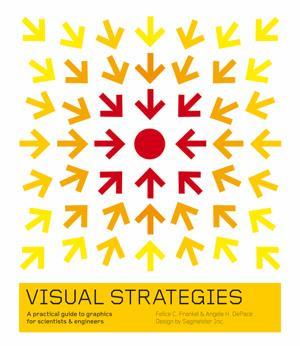Felice Frankel and Angela DePace
Yale University Press
2012 | 153pp | £25
ISBN 9780300176445

As you would expect from a book named Visual strategies, this book delivers beautifully illustrated examples in a comprehensive and practical manner. Readers are shown how to communicate scientific results and conclusions using illustrations and graphics in the best possible way. Covering a wide-range of scientific disciplines from biological examples through to physics, astronomy and various chemistry fields, there’s something for everyone here.
The chapters are clearly presented using a coloured tab system, making it easy for readers to navigate between points of interest and there are three main sections of note. The first consists of three chapters that help define a graphic’s purpose, suggest improvements and provide revised examples. Form and structure is helpful for those working with photographs, micrographs or molecular models. Process and time is useful for illustrating processes that take place over time and result in change. Then Compare and contrast provides advice on qualitative, quantitative and visual comparisons.
Of course, this book wouldn’t be complete without case studies. These are published figures and schematics from a wide range of scientific papers in ‘before’ and ‘after’ states, clearly describing what was wrong with the image and how it’s been changed for the better. Typically, the guide exploits over-complicated schematics, where, by eliminating unnecessary wording and incorporating visuals, a clearer and more professional graphic is obtained.
The last section on interactive graphics is perhaps a little hit and miss. As the authors acknowledge at the beginning of the chapter, it’s very difficult to discuss interactive graphics in a static book format. Having said that, they do well in tackling large, complicated datasets like neural maps, genomics and proteins, to name a few, and the reader is encouraged to view the examples on the Visual strategies website.
As a practising chemist who has moved into scientific publishing and design, I found this book both informative and inspiring. I also think this guide will help researchers in multidisciplinary collaborations, as it demonstrates that each discipline requires different strategies when it comes to visually presenting results. So whether you’d like to enhance your future journal submissions and grant proposals, or simply brighten up a conference poster or presentation, this could be the practical guide for you.
Purchase Visual strategies from Amazon.co.uk












No comments yet